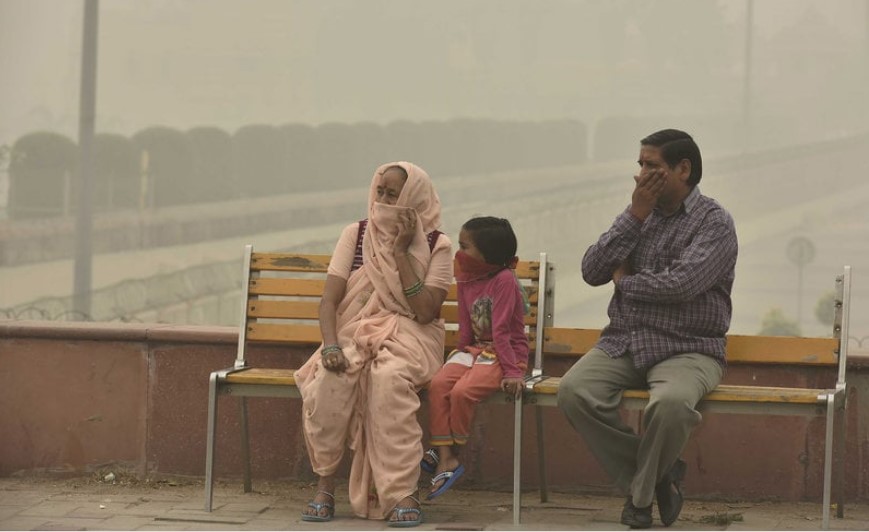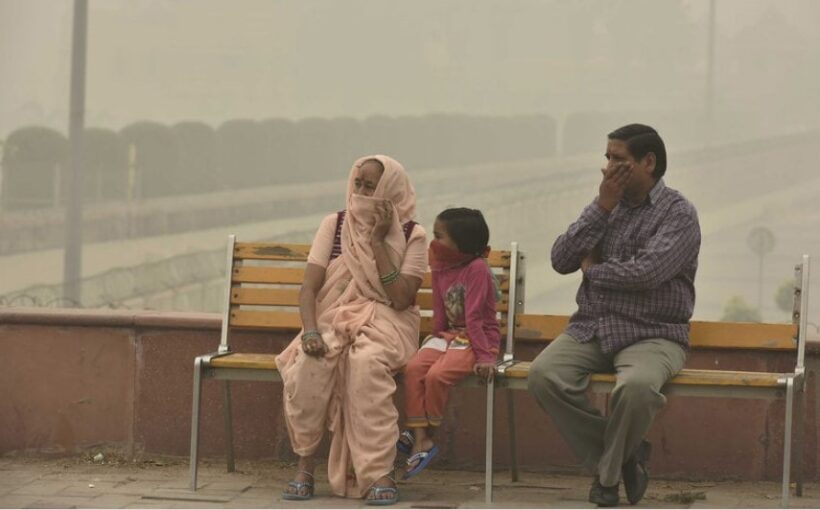By P.K.Balachandran
Colombo, December 12 (Counterpoint): In recent days, there has been a lot of concern over the deterioration of air quality in Sri Lanka due to the increase in the level of fine particles (PM2.5) in the atmosphere. The primary reason for the current deterioration is said to be the entry of polluted winds from the Indian subcontinent and the South Asian region at large. This movement had been triggered by the cyclonic conditions prevailing over the Bay of Bengal.
Air pollution, which is evident in all parts of Sri Lanka, has a tendency to cause respiratory illnesses and cardiovascular diseases. The elderly and the medically vulnerable have even been asked to stay indoors and others have been advised to wear good-quality masks.
Pre-existing Problem
Though transboundary pollution is the primary issue at the moment, air pollution as such is not new to Sri Lanka. And it has been increasing due to a variety of factors, both internal and external (transboundary). These have been brought out by Peradeniya University Science Faculty’s O.A. Ileperuma in his Review of Air Pollution Studies in Sri Lanka published in 2020.
Here are some of the takeaways from Ileperuma’s review:

Air pollution refers to the release into the atmosphere of various gases and fine particles at rates that exceed the natural capacity of the environment to dissipate, absorb and dilute. The gaseous air pollutants of primary concern are sulphur dioxide, nitrogen dioxide and carbon monoxide which are directly emitted owing to the combustion of fossil fuel in automobiles, power plants, industries and biomass burning. Ozone formed in the lower atmosphere is a secondary air pollutant generated from the photochemical reactions of primary air pollutants like NO2 (Nitrogen Dioxide). Diesel smoke consists of unburnt hydrocarbons like poly-aromatic hydrocarbons which are known carcinogens.
Fossil fuel combustion yields fine particles that can penetrate deep into the lung. An average person inhales about 10,000 litres of air daily. Therefore, its purity profoundly affects people’s health.
Regular air pollution monitoring in Sri Lanka since 1997 has revealed that air quality values have often exceeded safe limits here. Pollution levels are highest during the North-East Monsoon months (December to February) owing to transboundary air pollution. Studies during the period 1997-2003 showed that the levels of sulphur dioxide, nitrogen dioxide, and ozone were steadily increasing while those of carbon monoxide levels were decreasing.
Air pollution increase in Sri Lanka is also due to the phenomenal increase in the number of motor vehicles, traffic congestion, the increasing use of fossil fuel for power generation and also the continued use of wood in domestic cooking and the use of biomass in the rural areas. During the period of an acute shortage of cooking gas many households in metropolitan Colombo also switched to wood for cooking.
Kandy Worse Than Colombo
Air quality in Kandy is worse than that of Colombo owing to its geographical location, increased vehicle population and traffic congestion. In Kandy, sulphur dioxide, nitrogen dioxide and ozone levels exceeded the standards on 41%, 14% and 28% of the occasions during the period 2001-2005.
Mean total concentrations of 16 prioritized PAHs ranged from 57.43 to 1246.12 ng/m3 with a mean of 695.94 ng/m3 in urban heavy traffic locations in Kandy. PAHs are Polycyclic Aromatic Hydrocarbons, a group of persistent organic pollutant compounds. Due to the polluted air, there are increasing cases of respiratory diseases such as chronic obstructive pulmonary disease in Kandy.
In 2011, emissions from motor vehicles accounted for 55-60% of air pollution, while 20-25% was due to industries and 20% was from domestic sources according to the Sri Lankan Ministry of Environment.
Sri Lanka once produced over 95% of its power needs from hydel projects, but this has gradually decreased, with hydropower now accounting for only about 50% and sometimes even less. In 2018, the generation mix from hydro, thermal and coal was: 5149, 1886 and 4764 GWh respectively (according to a Central bank report of 2018). Thus, more power was produced by burning fossil fuels creating more pollution.

Colombo city’s air is polluted because 50% of the vehicles, 70% of industries and several thermal power plants are located in the Colombo Metropolitan area.
The transport sector generates the most amount of air pollution. The biggest increase is in the number of motorcycles, which account for about 50% of the entire vehicles fleet. The vehicles fleet in Sri Lanka increased from 978,544 in 1997 to 8.1 million in 2019. Nearly 50% of all vehicles are registered in the Western Province, the most highly populated and congested of the Provinces. Vehicles using two-stroke engines were bad pollutants.
The phenomenal increase in the number of motor vehicles has resulted in traffic jams. Traffic jams produce more soot, carbon monoxide and unburnt hydrocarbons compared to vehicles travelling smoothly at a uniform speed of about 40 km/h.
The uncontrolled increase in the number of vehicles will be the biggest challenge in the future. The economic loss due to traffic congestion in Colombo has been estimated by Prof. AS.Kumarage of Moratuwa University, to be around Rs.32 billion annually. The increased cost of treating patients affected by air pollution will be an immense economic burden to the government.
Sulphur Content in Jaffna
Jaffna, which is located close to the Indian sub-continent, is expected to have a higher influence from the pollution clouds coming from neighboring India.
RAINS- ASIA model 7.52, a computer model to determine sulphur depositions in the form of both wet and dry depositions, has been used to calculate sulphur depositions in several cities including Jaffna. The results reveal that acidic depositions both as sulphate in acid rain and as gaseous SO2, are increasing.
This model predicts that for most cities in Sri Lanka, acidic depositions will increase nearly four-fold during the period from 1990 to 2030. Most of the acid precursors originate in the Indian sub- continent where there is increased power generation using coal power plants.
Marine Traffic
An often-neglected contribution comes from the ships which traverse one of the busiest sea lanes in the world, located in close proximity to the southern tip of Sri Lanka. The fuel used in ships has high sulphur content, typically between 2.5 – 3.5%. Their contribution to acid deposition is highly significant.
As expected, it was found that in Galle, which is situated close to the shipping lanes, recorded the highest emission of sulphur from ships. This accounted for 40% of the total sulphur deposition in 1990. Using the same model, this share is predicted to increase to 60% by the year 2030.
By comparison, in the same year, other coastal cities such as Colombo and Jaffna had 14% and 2% of their sulphur depositions from ship movements.
Mitigating Measures
Under the Clean Air Action Plan of 2000 and subsequent plans in 2007 and 2015, several measures to reduce air pollution in Lankan cities have been taken. These include lowering of sulphur in fuel from 0.5% to 0.25%; banning two-stroke three-wheelers; terminating the addition of lead to petrol and commencing the Vehicle Emissions Testing program.
These have had a beneficial impact. However, so long as fossil fuels are the predominant source of energy and the number of petrol and diesel vehicles on the road is not controlled, the air in Sri Lanka will remain polluted. Alas, there is no sign of public transport replacing or minimizing private transport, and the railways replacing road transport.
END
The post Multiple sources of air pollution in Sri Lanka appeared first on NewsIn.Asia.
Source: NewsAsia



